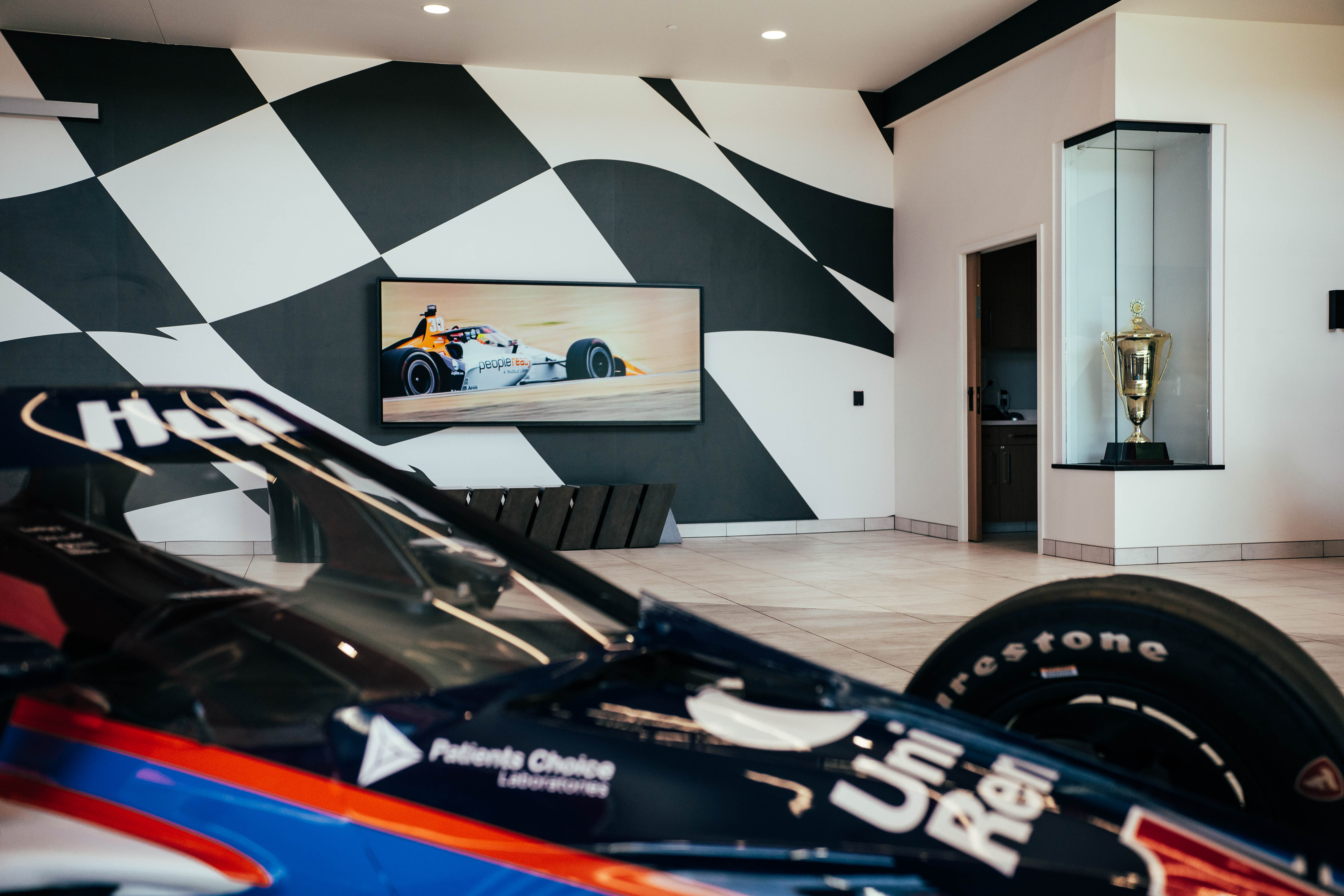Here's How the Nissan Formula E Team Elevates Simulation Accuracy
Scalable Display Technologies provides crisp visual imagery to simulate the dynamics of a real race car and track.

In order to stay ahead in the ABB FIA Formula E World Championship, the Nissan Formula E team enhanced the quality of the image and the realignment time of their simulator by integrating Scalable Display Technologies.
Formula E is the world’s first and only single-seater motorsport championship for electric race cars. Formula E debuted on the grounds of the Olympic Park in Beijing in 2014 and has grown into a global entertainment brand with motorsport at its heart. Today, Formula E continues to drive innovations in technology and mobility through collaborations with many of the world’s most competitive automotive manufacturers.
In 2018, Nissan made its all-electric racing debut in Season 5 of the Formula E Championship. Originally, Nissan partnered with e.dams, a French professional racing team; however, in April 2022, Nissan took full ownership of the team, fully supporting its long-term commitment to electrification and sustainability.
[SCN Installation Showcase 2023]
Driving simulators are an essential tool for professional racing teams to train their drivers and gain insights into their driving techniques. Data collected by Formula E racing cars, tracks, and sensors from actual races are fed into these simulators to create training exercises that are realistic and repeatable. Motorsport teams with simulators can train year-round and from anywhere in the world. Driving simulators provide an important edge to any driver looking to shave off that last tenth of a second at the checkered flag.
Nissan Formula E Team drivers record countless hours of development work on the simulator at the Nissan Formula E Team headquarters in France. Nissan’s simulator creates everyday opportunities for drivers to get in laps on the racetrack ahead of race day, receive feedback on cutting time at each corner and stimulate muscle memory. For Nissan Formula E Team, having the most accurate simulator possible is critical as this directly impacts their drivers’ training.
Nissan Formula E Team developed a realistic simulation with a 180-degree wraparound video image comprising of three projectors. Nissan’s team needed a calibration solution to blend their projectors together that fit their existing system design and offered improvements over their existing automated tools. Nissan Formula E Team enhanced the quality of the image and the realignment time of their simulator by integrating Scalable Display Technologies.
A daily selection of features, industry news, and analysis for AV/IT professionals. Sign up below.
“We selected Scalable Display Technologies to replace our old warp and blend technology system,” noted Dorian Boisdron, director, Nissan Formula E Team. “Our previous system was not robust and was time-consuming. Particularly for this application, the visuals must be flawless. We required a solution that is not only easy-to-use, but reliable and accurate.”
Scalable offered a unique technical advantage for Nissan Formula E Team’s simulator, not only in its accuracy and ease of use but also in its flexibility to adapt to the system architecture and screen geometry. Simulations are most effective when the driver’s field of view is completely immersed, which requires rendering power from the content databases. Nissan Formula E Team used multiple PCs for each projector to improve the graphic quality and rendering performance of the simulation. As a result, Scalable allowed the separate PCs to be treated as one consistent display.
[Everything We Know about the Vegas Sphere so Far]
Scalable’s software uses cameras to automatically calibrate multiple projectors images into a single seamless display. The cameras capture data during a collection sequence to create a series of mesh files that contain data for the display geometry, color, brightness, and overlaps. The cameras are used to realign the image at the click of a button or set to run regularly on a schedule, ensuring Nissan Formula E Team’s drivers always have access to the simulator and the image is forever simulation ready.
The AVNetwork staff are storytellers focused on the professional audiovisual and technology industry. Their mission is to keep readers up-to-date on the latest AV/IT industry and product news, emerging trends, and inspiring installations.

